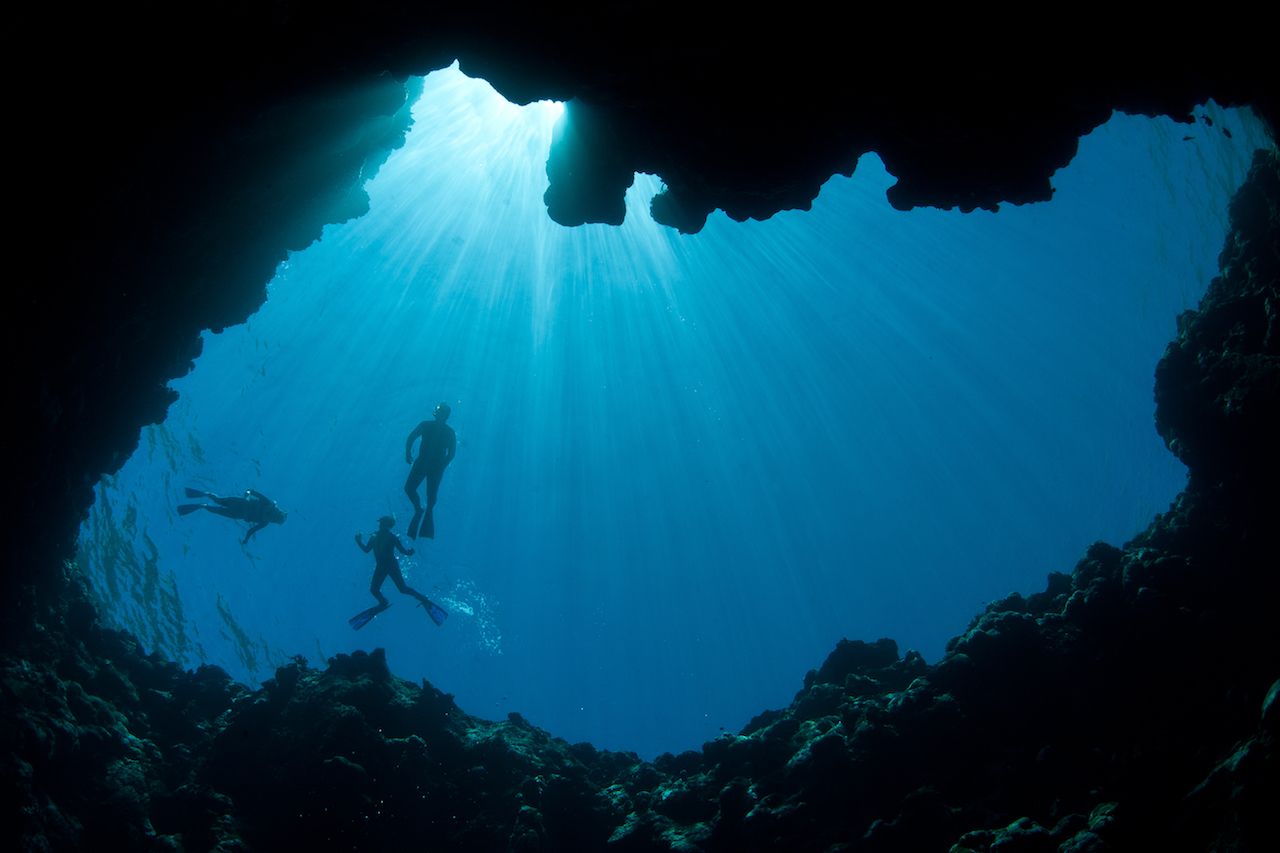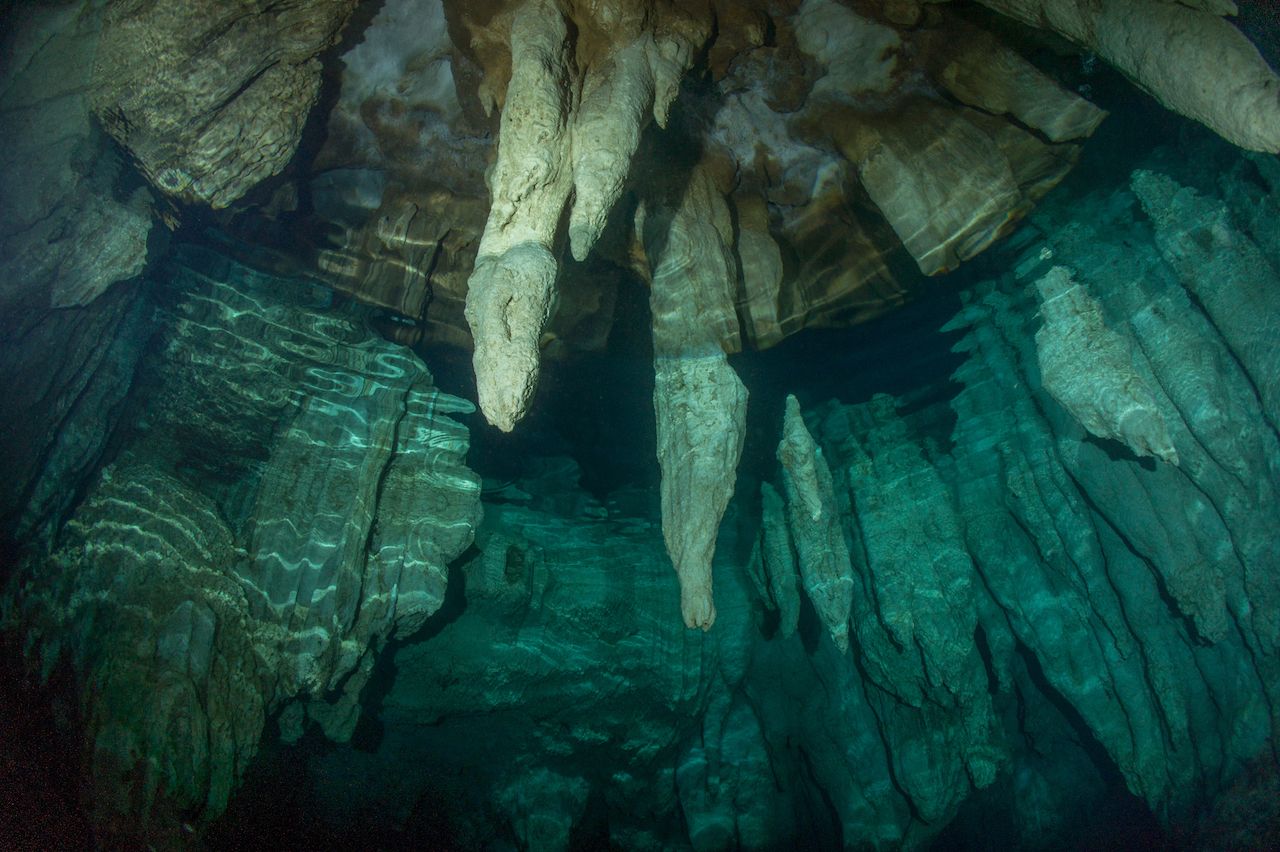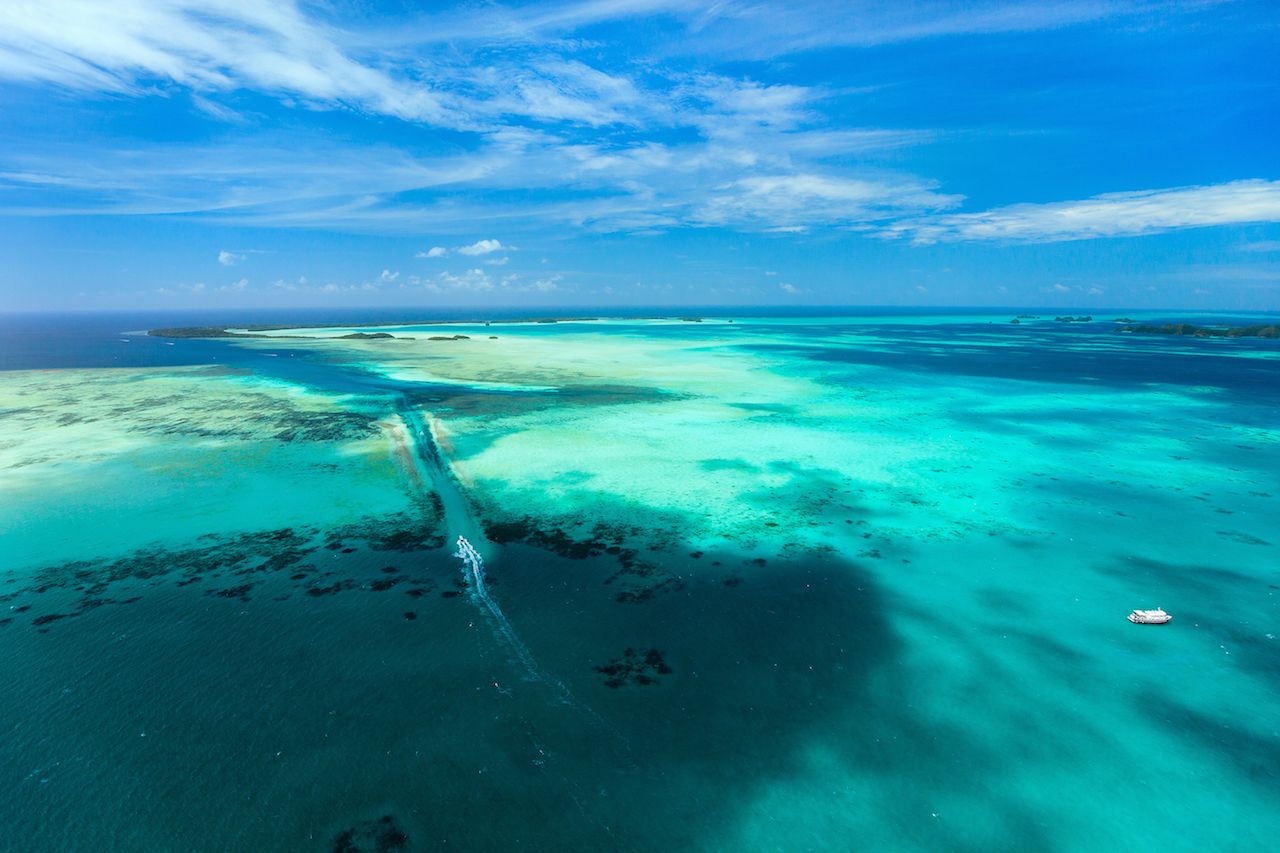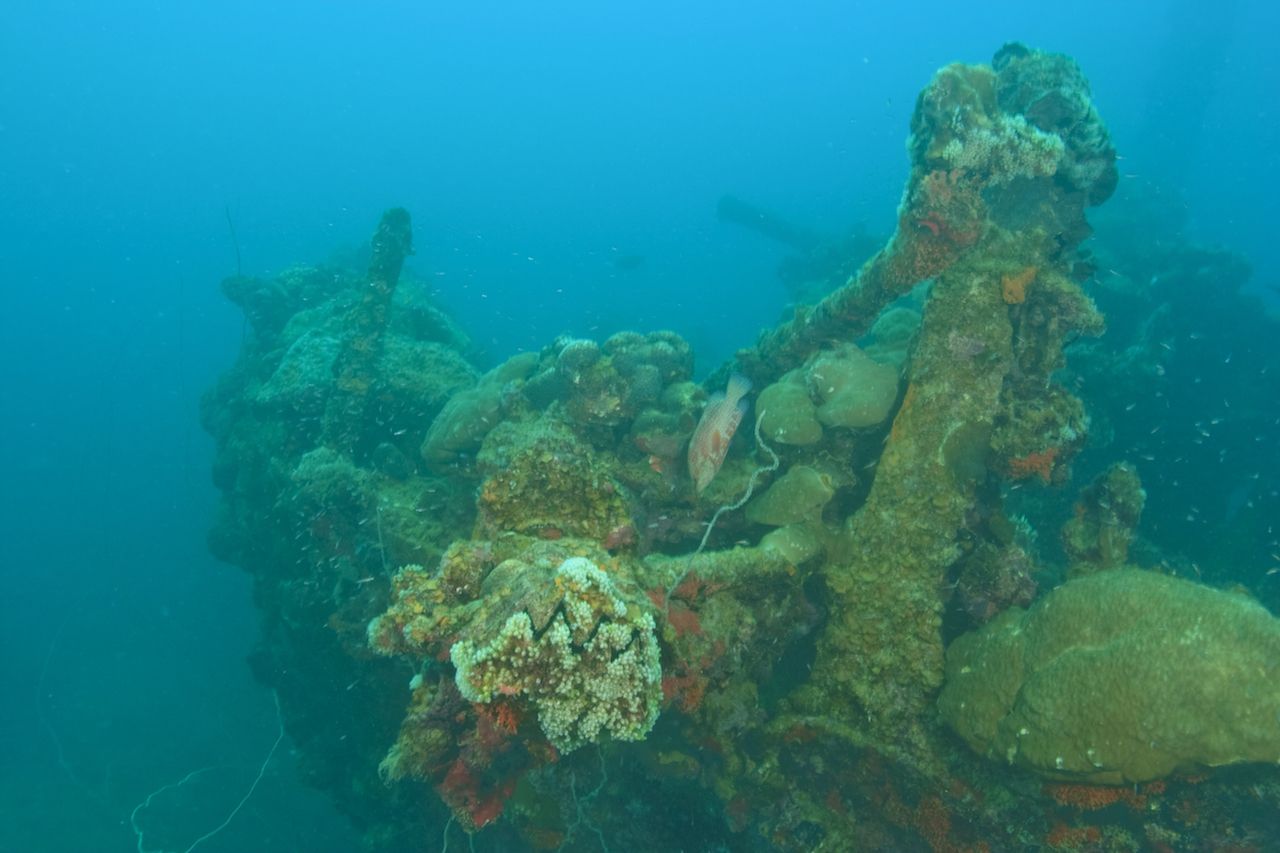Palau is an archipelago consisting of over 300 islands in Oceania and one of the best places in the world to go diving. The magnificently turquoise waters are home to countless wonders, whether it’s mineral formations, a historic wreckage, or the thousands of marine species that make it their home. Many of the dive sites are around the Rock Islands, part of Palau’s commercial center in Koror — so most diving will begin as a boat ride out from there.
While Palau is warm year-round, we recommend visiting during the dry season from October to May. Experience levels for diving here range from beginner to advanced, so there’s something for everyone. Here are five places to go diving around Palau.





